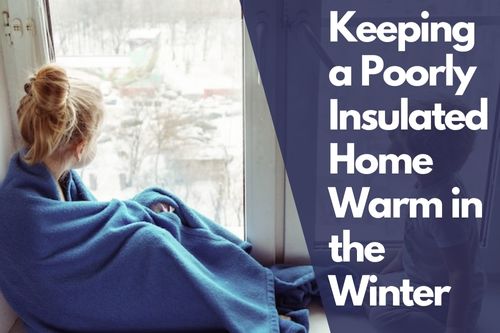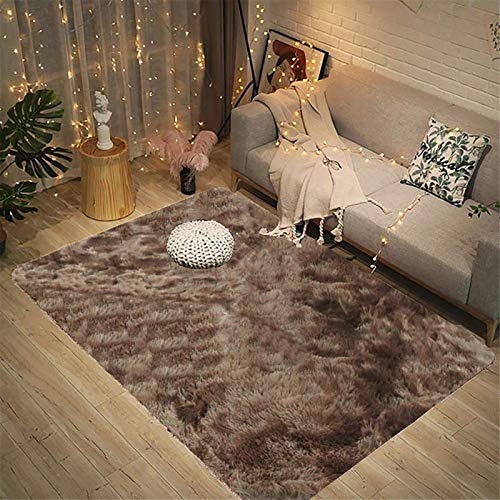Keeping a poorly insulated home warm can be a challenge, especially during the winter months.

Poor insulation means that your home is unable to retain heat, and as a result, you may find yourself spending more money on energy bills. Fortunately, there are some simple ways to help keep your home warm without having to invest in expensive repairs or renovations.
Below is a list of some easy ways to keep your home warm when it lacks proper insulation.
- Use Thick Curtains
- Weatherstripping
- Use a Dehumidifier
- Caulk Openings in Doors & Windows
- Get an Area Rug
- Don’t Block the Radiators
- Insulate Hot Water Pipes
- Line The Wall Behind Your Radiators
- Attach Polystyrene Boards to Exposed Walls
- Light Some Candles
- Insulate Your Attic
Use Thick Curtains
One of the easiest and most cost-effective ways to keep your home warm during the winter months is by using thick curtains or drapes on all windows.
Keeping your family safe!
Safety incidents have taught me that everyone should have a home safety kit to ensure family members can escape a fire quickly and safely. Here is the Safety Kit that I recommend, in the event of a fire or other emergency.
This will help block out drafts and trap heat inside your home, making it easier for you to maintain a comfortable temperature without having to rely on heating too much.
If you can find curtains with an extra lining or insulated backing, these will provide even more insulation against cold air coming in through the windows.
Weatherstripping
Another cost-effective way to reduce heat loss and keep your home warm is by weatherstripping windows and doors.
Weatherstripping prevents air from escaping, reducing drafts, and creating a more comfortable living environment. You’ll need to start by checking around all your windows and doors for any gaps or cracks in the sealant.
If you find any, use foam tape or caulk to fill in those gaps and prevent heat from escaping outside.
Use a Dehumidifier
A dehumidifier is an underrated tool that can help make your home feel warmer without having to rely on energy-intensive heating methods.
A dehumidifier works by absorbing excess moisture in the air, which can make your home feel colder and more uncomfortable. By removing excess humidity from the air, you’ll create a drier environment that is easier to heat.
The excess moisture in the air in your home can also contribute to the growth of mold and mildew, so using a dehumidifier can provide additional benefits in addition to making your home feel warmer.
Caulk Openings in Doors & Windows
Another way to prevent drafts from entering your home is by caulking any openings around doors and windows.
Caulking helps seal gaps between window frames and door frames so that cold air does not enter your house through these openings. This is especially important for older homes that may have more pronounced gaps between the walls and windows than newer houses do.
It’s also worth noting that caulking should be done every few years in order to maintain its effectiveness.
Get an Area Rug
Area rugs are another great way to add an extra layer of insulation to your home during the winter months.
Not only do they provide additional warmth underfoot, but they can also help absorb sound, making your space feel cozier overall. If possible, try to get an area rug made of natural materials such as wool or cotton as these materials are better at insulating than synthetic fibers like nylon or polyester.
If you do your checks and can find one with an extra layer of padding underneath, you will further increase the insulation value of the rug itself.
Don’t Block the Radiators
Radiators are a common source of heat in homes, particularly during the winter months. If you’ve had them on at night, there will still be some residual heat left behind the next morning.
To ensure that you don’t block the heat, you should make sure that you leave space around the radiators. Some people make the mistake of blocking radiators with furniture or even their own bodies, which can significantly reduce the amount of heat that radiates into the room.
Instead, try to keep the space around your radiators clear by moving any furniture or other items that might be blocking them.
Insulate Hot Water Pipes
Another way to keep your home warmer during the winter months is by insulating the hot water pipes around your home. A lot of the heat loss often experienced in homes is the result of hot water losing its heat as it travels through pipes on its way to appliances and fixtures.
One simple solution is to insulate the water pipes that run through your home, particularly those running beneath your floorboards or in your basement.
You can do this by simply wrapping them with foam or fiberglass insulation, which will help keep the hot water warmer for longer.
Line The Wall Behind Your Radiators
Older homes have walls that are often not properly insulated. If you have radiators in your home, these can be a source of heat loss if the wall behind them is too exposed.
One way to prevent this is by lining the wall behind your radiators with an insulating panel or sheet. This will help to prevent the heat from escaping out of the wall and will help keep your home warmer.
Depending on the design of your radiators, you might be able to access the rear or you might need to dismount them to line the wall with insulation. If you have any questions about this, it’s best to consult a professional who can help guide you through the process.
Attach Polystyrene Boards to Exposed Walls
Polystyrene boards are also known to be an easy way to add insulation to the walls of your home. These boards are typically inexpensive and easy to install, making them a great option for homeowners who want way to increase the insulation value of their home without having to hire a professional.
To install polystyrene boards, simply attach them directly to the walls using an adhesive spray or screws. It’s important to make sure that you only attach them to solid surfaces as they are not designed to be used on drywall or other surfaces that are not sturdy.
If you can, try to line the polystyrene boards with a reflective material like foil, which can further help insulate your home.
Light Some Candles
Another simple way to add extra warmth to your home is by lighting some candles. Large candles last a long time and do a good job of providing gentle heat, which is perfect if you have a small room that needs heating.
When lit, candles also release a pleasant scent that can add to the feeling of warmth in your home. This is especially useful if you have any cold drafts or other areas where it feels colder than usual.
To get the most out of your candles, try to light them in different parts of your home so that you can evenly distribute the heat.
You do need to be careful if you have young children or pets, as both can be injured if they get too close to an open flame. You should also make sure that you never leave the candles unattended, and always extinguish them before leaving the house or going to bed.
Insulating Your Loft Space
Another great way to keep heat in and save money on heating bills is by insulating the loft space of your home. Adding extra insulation will ensure that less heat escapes into the loft, where it can be lost forever if left uninsulated.
You can also try adding an additional layer of insulation on top of what’s already there if you want to increase efficiency even further.
To insulate your loft, start by creating an airtight seal around the edges of your roof. This will help prevent any warm air from seeping out and will also prevent any cold winter air from entering your home.
You then need to line the underside of your roof with insulation panels or fibreglass insulation rolls. There are many different types of insulation panels that you can use, so it’s important to choose the one that’s best suited to your needs.
Once all the insulation panels are in place, you can add a layer of plywood layer on top of them. This will also help to keep any critters or pests out and give you storage space in your loft.
Final Thoughts
There are many different ways you can keep a poorly insulated house warm during the winter months – from using thick curtains on all windows to investing in an area rug with extra padding underneath for added insulation value.
It is however important not to overlook simple things like caulking openings around doors and windows as well as checking for any other potential sources of drafts throughout your home.
Keeping up with regular maintenance tasks will also ensure that you’re able to enjoy a comfortable home irrespective of how cold it gets outside.
So if you’re looking for a simple and cost-effective way to keep your home warm this winter, be sure to try out these tips and explore other ways to increase your home’s insulation value.






